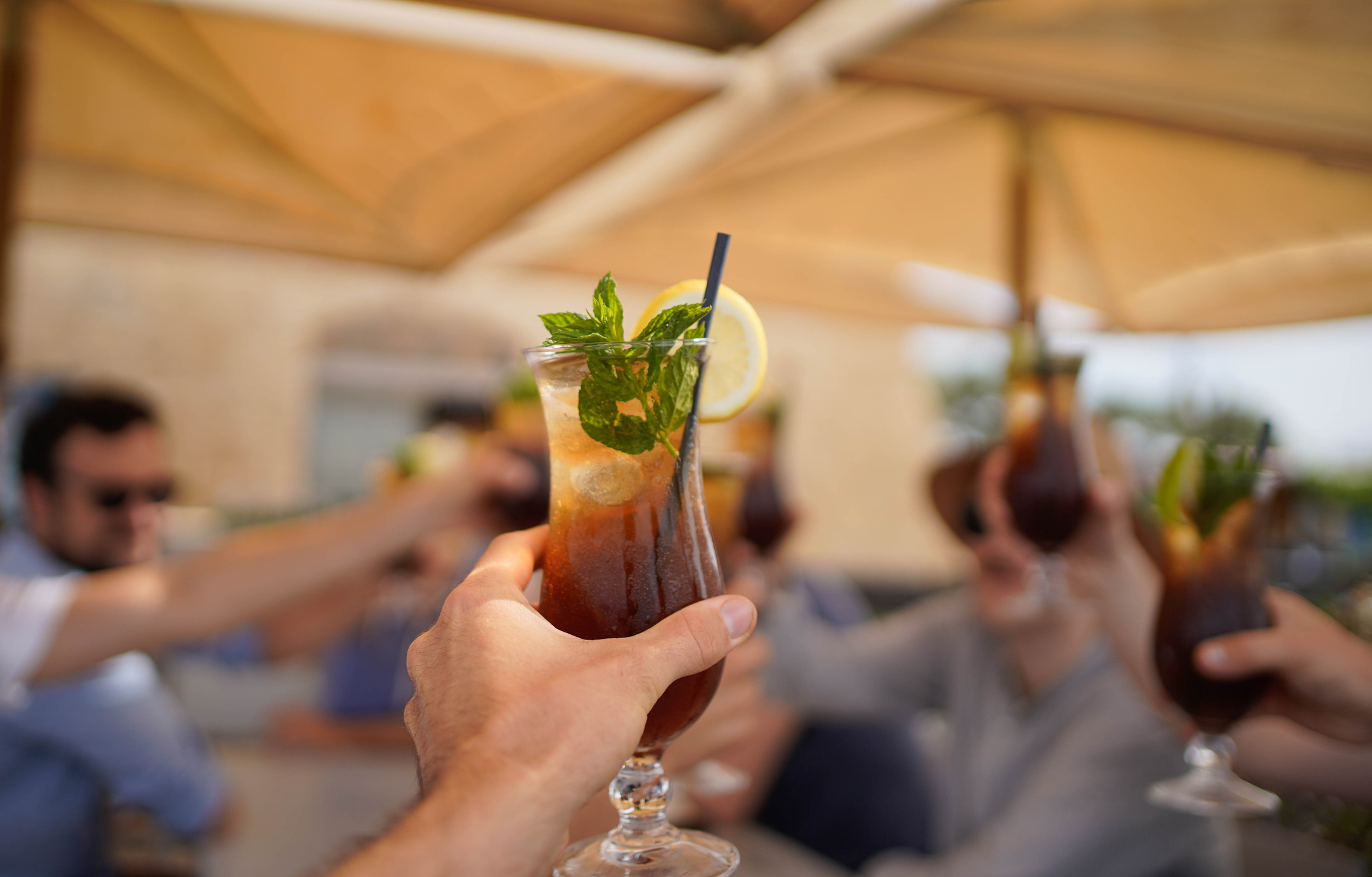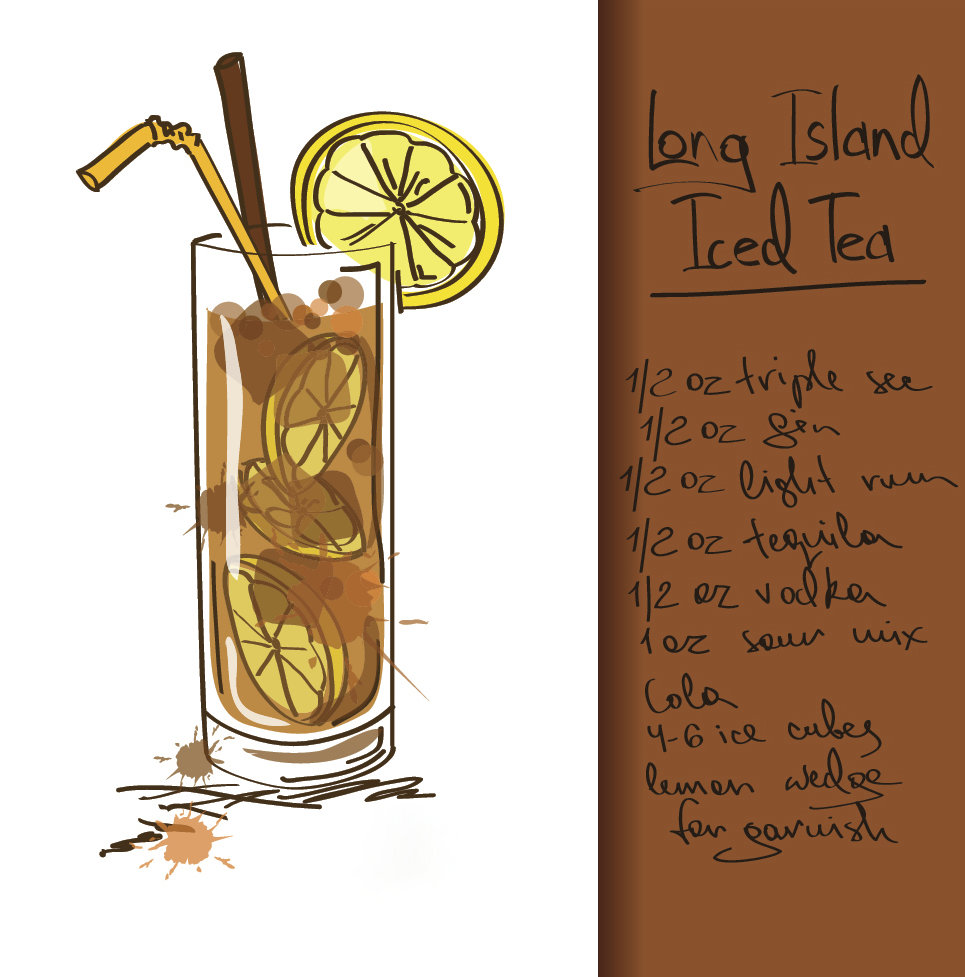Tea Time: The Hamptons’ Hazy Legacy of Inventing The Long Island Iced Tea 50 Years Ago

Fifty years ago this summer, a competitive bartender in Hampton Bays grabbed five bottles of booze and hastily invented what became the region’s most infamous cocktail: The Long Island Iced Tea — shaking up bars everywhere.
The story of late mixologist Robert “Rosebud” Butt mixing that seminal mixed drink has been rehashed countless times in the five decades since, although not as often as it’s been ordered, drunk or mocked.
While some spin yarns of a disputed origin story, many retellings of Butt’s version fail to mention that he concocted the cocktail during a 1972 contest, not at the original Oak Beach Inn near Jones Beach, but at the OBI East, which occupied a historic property that was later home to the famed Canoe Place Inn nightclub.
The Long Island Iced Tea may be the Hamptons’ biggest contribution to the world since fresh fish.
“They put a bottle of triple sec on the bar and they asked us to make something out of it,” Butt told PBS’ Inventors Series in 2013, a year before he died. “Twenty other bartenders and myself, we went to work and I came up with this drink … It just spread from there. All of sudden five years later, everywhere you went had the Long Island Iced Tea.”
But Southern lore claims a Prohibition-era bootlegger named Charles “Old Man” Bishop beat Butt by a half century, making a cocktail in the 1920s called the Long Island Iced Tea — so named for Bishop’s hometown of Long Island, Tennessee — that uses similar, but slightly different ingredients.
Tourism boards from the two regions held a publicity stunt of a contest to see which version is best, but LI’s bartenders lost, claimed it was rigged and demanded an investigation. It would hardly be the first spirited debate to spark a figurative barroom brawl over who poured a beverage first — the negroni, James Bond’s second choice of cocktail after a martini, is the focus of another bitter dispute.
“The drink has a long and very interesting history and we just felt like it was time for us to embrace it and our role in its creation,” Jud Teague, executive director of Visit Kingsport, said in 2018. The tourism bureau represents Tennessee’s Long Island — a four-mile-long strip of land in the Holston River.
Teague’s counterparts on LI balked, noting that while the names are the same, the recipes differ. Bishop used rum, vodka, whiskey, gin, tequila with a bit of maple syrup. Two decades later, his son, Ransom, tweaked the recipe by adding lemon, lime and cola. Besides using triple sec instead of whisky, the New York version also includes sour mix. Both versions are served on ice.
“Long Island’s very proud of our Long Island Iced Tea and we’ll defend it … but the drinks are different,” said Maggie LaCasse, director of communications for Discover Long Island.
Butt, who had New York State ‘LI Ice Tea’ vanity license plates but died four years before the interstate Long Island Iced Tea showdown, addressed the controversy on his website, liicetea.com.
“Possibly similar concoctions were created elsewhere, at another time,” Butt wrote. “But the Long Island Iced Tea, as we know and love it, is truly a product of Long Island, created by a true Long Islander, at a genuine Long Island institution with a famous story all its own.”

LONG ISLAND ICED TEA ON THE ROCKS
It was 1972. Don McLean’s “American Pie” topped the music charts. Public support for the Vietnam War waned. A new movie called The Godfather wowed audiences. President Richard Nixon was campaigning for a second term that he’d win that fall.
On the Island, the Long Island Expressway was just completed and the OBI was such a popular hot spot that its owner poured money into opening four satellite locations, including the Hampton Bays club.
The owner Robert Matherson, who warred with local officials and neighbors over noise complaints and parking issues, launched a “Get Out of New York Before It’s Too Late” campaign in the 1980s before taking his own advice and moving to Florida. Matherson aired his grievances when he penned Scandal at The Oak Beach Inn: Political Corruption vs. Long Island’s Hottest Night Club — and toasted Butt’s beverage in the book.
“Butt won a trip for two to the grand Miami Fountainbleau Hotel for creating the now-famous Long Island Iced Tea at the OBI East,” Matherson wrote.
But the cocktail that OBI popularized grew to have as controversial a reputation as the club itself. For as many lighthearted articles about the Long Island Iced Tea are continually published to this day, it also routinely appears on lists declaring it among the most dangerous cocktails due to its potency and deceptively innocent taste that makes it go down easy while causing quick intoxication. Often served in a pint glass, it’s an order that can be a red flag for bartenders and bouncers.
In Butt’s PBS appearance, he recalled meeting a woman who learned he invented the drink and then blamed him for wrecking her car. When Nicole “Snooki” Polizzi of The Jersey Shore fame was arrested in 2010 for disorderly conduct, what was among the drinks she had downed? A Long Island. Same goes for a man who was nabbed for boating while intoxicated in 2016 after running his 72-foot yacht aground in Palm Beach, Fla.
It’s not uncommon for DWI cases that make news involving the drink to note that the suspect didn’t remember what happened after they drank the Long Island Iced Tea.
LONG ISLAND ICED TEA WITH A TWIST
The credit that the Long Island Iced Tea gets for people making bad decisions is so well known that it’s repeatedly spilled into pop culture, having become a joke on multiple TV shows.
In an episode of The Big Bang Theory, Penny tricks Sheldon into drinking the cocktail before his attempt to fight Star Trek actor Will Wheaton ends in vomit. The drink made a few cameos on Sex and The City. And in an episode of The Simpsons, Marge drinks one and says, “I’d like to visit that Long Island place…if only it were real.”
Perhaps the most eloquent description of the drink came on Gilmore Girls when Lorelai warned her daughter Rory about it.
“Honey, someday, when you’re a little older, you will be introduced to something that is extremely seductive but fickle,” she said. “A fair-weather friend who seems benign but packs a wallop like a donkey kick, and that is the Long Island Iced Tea. The Long Island Iced Tea makes you do things that you normally wouldn’t do, like lifting your skirt in public or calling someone you normally wouldn’t call at really weird times.”

LONG ISLAND ICED TEA – SHAKEN, NOT STIRRED
Much like DJs put their spin on a song of summer, bartenders aplenty near and far have remixed the Long Island Iced Tea, jazzing it up with top-shelf liquors or other tweaks.
Recipes replacing the tequila with mezcal, using Mexican Coca-Cola, or some other ingredient upgrade are not uncommon. Beyond LI’s shores — like say, at some dive bar in downtown Indianapolis that shall remain nameless — is the possibility that bartenders may pass off any combination of liquor as a Long Island Iced Tea on otherwise unsuspecting patrons.
That isn’t to say the rest of the nation gets its tea wrong. Wyoming, of all places, ranks as the state that drinks the cocktail most, according to a 2020 analysis by travel site Upgraded Points.
In January, The New York Times predicted that the cocktail would be among the drinks of the year, along with the Blue Lagoons, Tequila Sunrises and amaretto sours.
“All those 1980s drinks you can barely remember (for obvious reasons) are coming back,” the paper reported.
“We all need things that are sweet and colorful and joyful and playful, especially now,” Andrew Freeman, president of San Francisco-based consulting firm AF & Co. that publishes an annual food industry report, told the Times.
Love it or hate it, the Long Island Iced Tea appears to be enjoying its golden anniversary with all the style its haters accuse it of lacking.
-With Parker Schug



